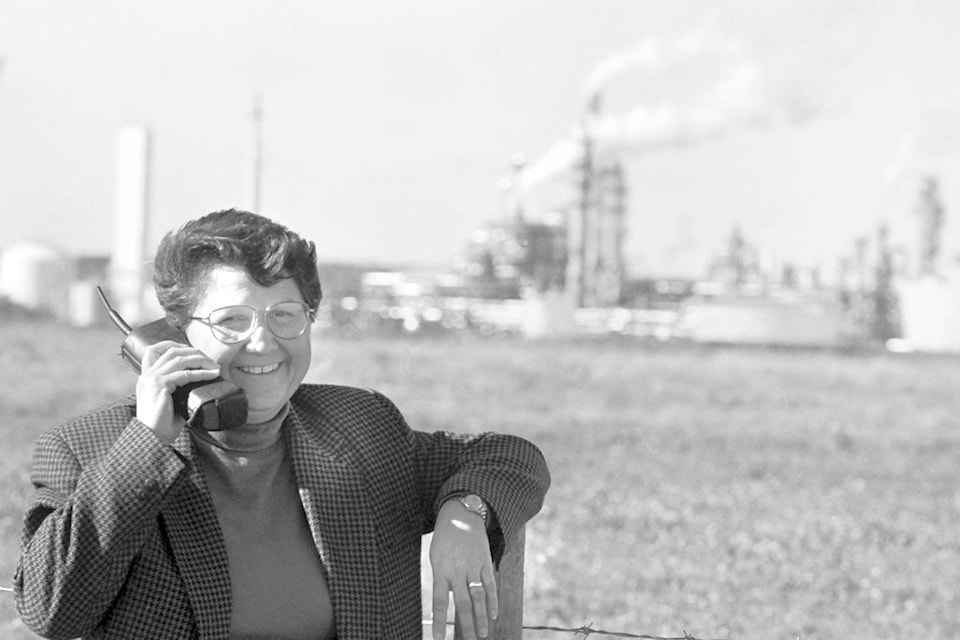Red Deer is a community of ups and downs.
First Nations people were attracted to the area’s abundant wildlife and the country’s first people lived here for thousands of years. But by the mid 1800s, the buffalo herds were gone and a way of life largely went with them.
Central Alberta’s agriculture potential caught the government’s attention — especially the Saskatchewan Land and Homestead Company. By the 1870s the land was surveyed and Red Deer’s most famous pioneer, Rev. Leonard Gaetz, his wife and 11 children arrived in the early 1880s.
Like the story in so many Canadian communities, the arrival of the railroad provided a big boost. In Red Deer, that upturn in fortunes began in 1891 after the Calgary to Edmonton rail link was completed.
It took a while, but interest in settling the Red Deer area grew steadily in the early 1900s and was incorporated as a village in 1901.
“Initially, we were a transportation distribution and agricultural service community like many Prairie towns,” said Michael Dawe, Red Deer archivist and author of Red Deer: The Memorable City among other local history books.
As anyone who farms knows, it can be a fickle way to make a living.
“Sometimes it’s hard to have a good year in agriculture, but it’s very easy to have a lot of bad years,” he says. “That would affect the whole community because so many people were dependent on it.”
By 1905, the Red Deer Lands Agency recorded 2,626 entries, the most of any Dominion Lands Office in the country. Around the same time, Red Deer got telephones and electricity.
The community continued to boom, fed by the railroads and agriculture, until the First World War when a two-decade slump settled in. It wasn’t until the late 1930s that the economy began to get back on its feet.
Then came the oil. Leduc Number 1 in 1947 began an oil boom that saw discoveries creep closer to Red Deer. By the early 1950s, oil had been found close to Red Deer, especially at Joffre.
Red Deer’s position as an oil and gas service hub had got its start.
By 1958, Red Deer was the fastest growing city in Canada. Industrial development, national chain stores and other offshoots of economic prosperity followed. But the community’s industrial base was always limited.
“We’ve never had pulp and paper mills, car plants and things that people think of as major industry,” he says. Not at least until the Joffre and Prentiss petrochemical complexes emerged just a few kilometres outside the city.
Those projects came at a time when the area was emerging from another economic downturn and the city’s population had actually dropped slightly in the 1970s for the first time since the Second World War.
But Red Deer was never a rust belt-style city such as those hit so hard in the U.S. Red Deer’s role as a regional government centre also helped shield it from economic downturns. For example, when Michener Centre was running at its peak, one in five Red Deer workers was employed there.
“The fact that we have the large government or public service component provided some levelling,” he says.
There were further downturns in the 1980s, however. Fortunately, significant government-supported construction helped ease the pain. Red Deer College was expanded, Westerner Park’s Centrium and the railway was moved from the downtown freeing up valuable commercial space.
By 2004, Red Deer passed Lethbridge as the province’s third biggest city. Now firmly positioned as an important regional commercial, agriculture, and oilfield services centre, Red Deer has routinely felt the ill winds of oil price downturns and world events such as the 2008-09 financial crisis.
Of course, the latest downturn, which has dragged on for more than two years is considered by many to be the worst since the early 1980s.
Despite the community’s lean economic periods, Red Deer has thrived, says Dawe.
“There are a lot of people who have moved here and, generally speaking, we’ve done very well compared to a lot of communities in the rest of the country.”
pcowley@www.reddeeradvocate.com
